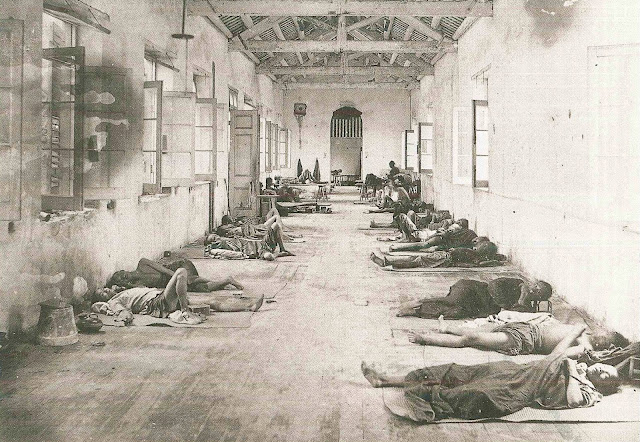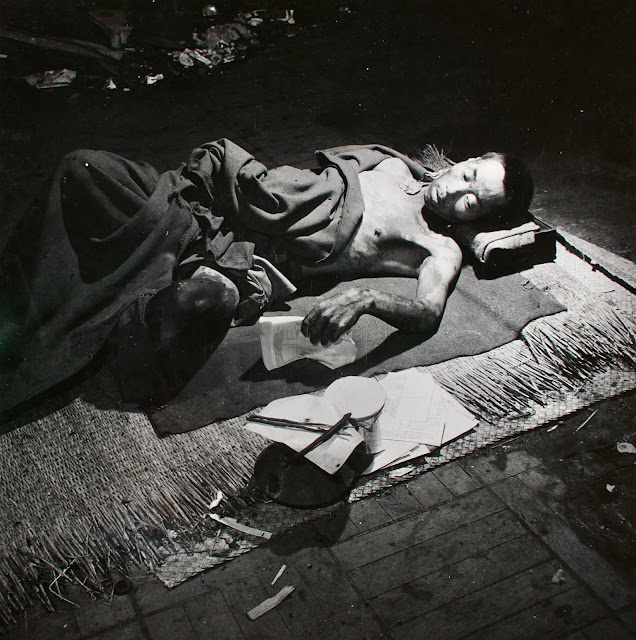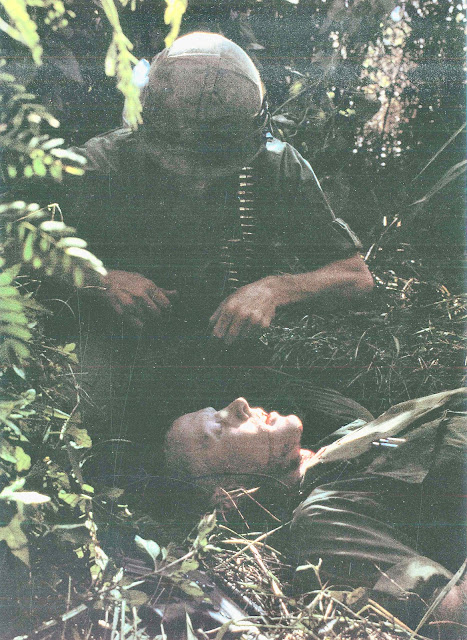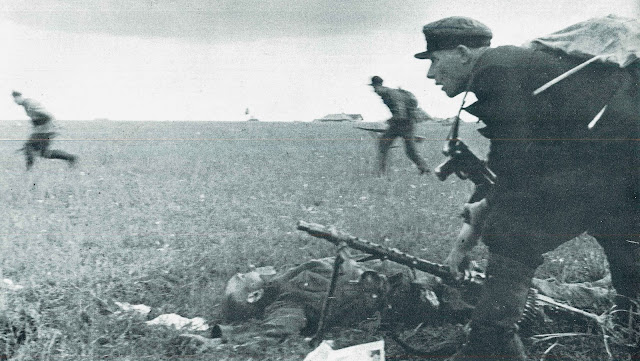On 26 March 1945, the closing day of the Battle of Iwo Jima in the Pacific War, Japanese soldiers charged and made a cutting attack on US positions. The bodies of Japanese soldiers were scattered after they were subsequently killed by US troops. The US soldiers looked down on the Japanese soldier's cruel corpses and performed an autopsy.
In the early morning hours of 26 March, on Iwo Jima, Ogasawara Islands, near the tent of an American 21st Fighter Force officer, he was assaulted by Japanese soldiers. Shortly afterwards, members of a number of neighbouring US units, including the Signal Air Alert Squadron, Black Air Force, Night Fighter Squadron, Naval Construction Battalion and Marine Corps Pioneer Force, entered the battle shortly afterwards. Approximately 300 Japanese soldiers, the remnants of three Japanese units, participated in the Japanese assault, attacking various American positions simultaneously. With flamethrowers, Tommy guns and hand grenades, the US Marines closed in on the Japanese assault from behind, killing and annihilating everyone down to the last Japanese soldier. The battlefield was littered with the bodies of the miserable Japanese soldiers left on the battlefield.
The Battle of Iwo Jima broke out on 19 February 1945, and on 26 March Lieutenant General Tadamichi Kuribayashi and other high-ranking officers led the final Japanese attack. The attack was not a banzai assault, but created maximum chaos and destruction. Remaining troops from the Japanese Army and Navy Headquarters, some 200 to 300 Japanese soldiers, moved down from the north along the western side of Iwo Jima at 5.15am on 26 March. Near the western shore, they attacked US Marine and Army outposts. The command post of the 7th Fighter Group suffered heavy casualties, but the US forces recovered from the chaos and launched a counter-attack. The US 5th Engineer Battalion hastily formed a battle line to hold off the Japanese attack. The chaotic battle lasted about three hours and the Japanese soldiers were wiped out, leaving 196 corpses. Around 40 Japanese troops were armed and carrying military swords, while a high-ranking officer committed suicide.
































